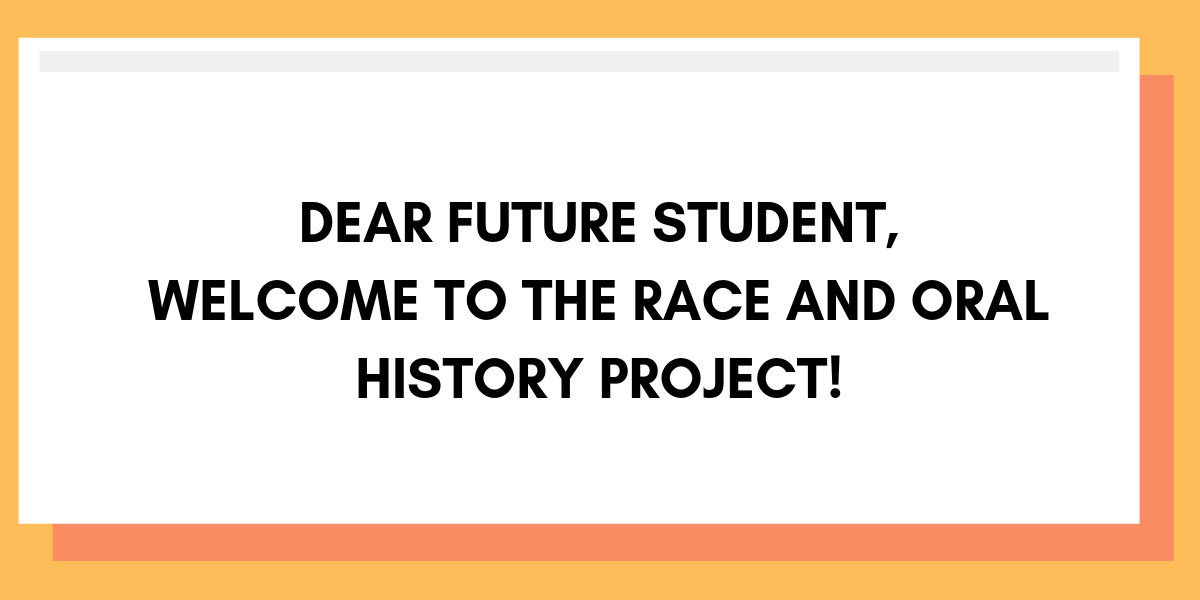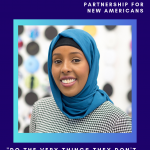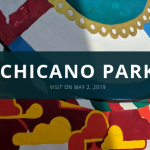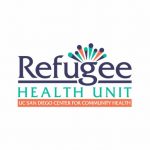Welcome to the Race and Oral History Project!
Dear Reader, you might be wondering: What is this class trying to do anyway? Why am I here?
Well, these were some questions that I was working to understand immediately after enrolling. Now, after taking this course, I think I can attempt to answer them. This class encouraged me to think about about how this course isn’t like any course I’ve ever taken because it doesn’t want you to study history or people– it wants you to create an entirely new system that allows people to build a history for themselves. I find that academia is prone to using buzzwords that proclaim “Look at our research on these groups of people! Isn’t it exciting!” all while keeping the knowledge firmly within academic circles, and essentially ‘othering’ the groups they claim to be working with. I think this course is taking steps to confront that by making the material easily accessible, and by working closely alongside local organizations that focus on the actual needs of individual communities, the research becomes less about scholarly conjecture, and actually focuses on real people. As a history major, one of the things that get discussed in many classes is something called “historiography”, or the study of how history is recorded. I think this class is an example of crowdsourcing history– where people from underrepresented groups can tell their stories and have access to them, and use them to meet the needs of their people. In a way, the class represents a step in how history itself can be recorded for generations to come, and that is what makes it unique. Plus, I don’t think you need to be a history or ethnic studies student to contribute and understand this project– you just need to be open minded and ready to learn from others.
I feel that understanding what this class is about is really helpful because it prevents you from approaching it like oh, it’s just another class. Because it really isn’t. Altogether, it’s a project, an internship, and actually involves interacting regularly with real, live people (buckle up fellow introverts, it’s going to be a wild ride).
Ultimately, my advice to you, Dear Reader, is this: approach this class with every skill at your disposal, and be flexible as well as open to change. If you are confused about something, ask someone. Listen to the organizations that you are partnered with because they recognize the needs of the people they work with, and keep their goals in mind. Furthermore, listen to what the guest speakers that come to lecture have to say because their comments can help you figure out how to navigate communities that you aren’t familiar with.
For example, when conducting your oral histories, let’s say you ask the interviewee about a place they lived in during their childhood. Presumably, they describe it. Now, what do you do? They finished talking, there’s an open pause. My gut instinct was to move on to another point, but something a guest speaker said stuck with me. She said to pay attention to sensory experiences, and to ask them something akin to “What did it smell like?” Now I had already conducted my interview by that point, but that little question could have led to a whole new line of questioning I would have never considered! Always try and dig deeper, but make sure you remain respectful. Another speaker discussed the militarization of the police in San Diego and how that directly related to the treatment of the Somalian community, specifically those that were both Muslim and black. That lecture demonstrated the importance of intersectional identities amongst ethnic groups in San Diego and did affect my line of questioning for the oral history interview.
Finally, on a more logistical note: make sure you always have your paperwork ready from the very start and regularly communicate with everyone that you are working with. Simply describing the project in an email will not be enough– attach your planned questions and consent forms from the get-go, because mistrust of the academic community is quite common, and probably well-deserved. As for communication, ensuring that you are all on the same page will keep everything flowing smoothly, and also lead to accountability and trust for everyone involved. Additionally, if you need to design graphics and you aren’t a graphic designer, use a program like Canva (a literal lifesaver for our group assignment).
I wish you all the best on your journey as part of the Race and Oral History Project, because it was super fun and a way to meet people and make friends that you wouldn’t meet otherwise!





